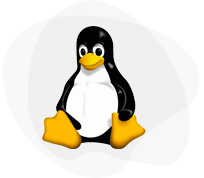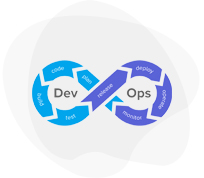This blog will explain what actually linux is for those who are curious about it’s definition but not yet ready to dive without initial introduction.
Linuxis, in simplest terms, an operating system.
Now if you have to define the operating system, It is the software on a computer that enables applications and the computer operator to access the devices on the computer to perform desired functions. It works as a interpreter that relays instructions from an application to, for instance, the computer’s processor. The processor performs the instructed task, then sends the results back to the application via the operating system.
Linux is an operating system that evolved from a kernel created by Linus Torvalds when he was a student at the University of Helsinki.
As an open operating system, Linux is developed collaboratively, meaning no one company is solely responsible for its development or ongoing support. Companies participating in the Linux economy share research and development costs with their partners and competitors. This spreading of development burden amongst individuals and companies has resulted in a large and efficient ecosystem and unheralded software innovation.
Over 1,000 developers, from at least 100 different companies, contribute to every kernel release. In the past two years alone, over 3,200 developers from 200 companies have contributed to the kernel–which is just one small piece of a Linuxdistribution.
Linux is a bit more nebulous than Windows and it can be slightly harder to get your head around the concept to start off with. When people talk about “Linux,” they don’t always necessarily mean the same thing! If I say “I use Linux,” it means I have both the operating system kernel and some applications that run on top of it. If you decide you want to run Linux on your computer, you usually get it in the form of a convenient package called a distribution or “distro“. This is typically one or more CD-ROMs or DVDs that installs onto your computer the basic operating system kernel and a collection of application programs.
THE BIRTH OF LINUX
On August 25, 1991, a Finn computer science student named Linus Torvalds made the following announcement to the Usenet group comp.os.minux:
I’m doing a (free) operating system (just a hobby,won’t be big and professional like gnu) for 386(486) AT clones. This has been brewing since april, and is starting to get ready. I’d like any feedback on things people like/dislike in minix, as my OS resembles it somewhat (same physical layout of the file-system (due to practical reasons) (among other things).
Torvalds built the core of the Linux operating system, known as the kernel. A kernel alone does not make an operating system, but Stallman’s GNU tools were from a project to create an operating system as well–a project that was missing a kernel to make Stallman’s operating system complete. Torvalds’ matching of GNU tools with the Linux kernel marked the beginning of the Linux operating system as it is known today.
Linux is in many ways still only at the beginning of its potential, even though it has enjoyed tremendous success since Torvalds’ first request for help in 1991.
Linux has gained strong popularity amongst UNIX developers, who like it for its portability to many platforms, its similarity to UNIX, and its free software license. Around the turn of the century, several commercial developers began to distribute Linux, including VA Linux, TurboLinux, Mandrakelinux, Red Hat, and SuSE GMbH. IBM’s 2000 decision to invest $2 billion in Linux development and sales was a significant positive event to the growth of Linux.
WHERE LINUX IS TODAY
Today, Linux is a multi-billion dollar industry, with companies and governments around the world taking advantage of the operating system’s security and flexibility. Thousands of companies use Linux for day-to-day use, attracted by the lower licensing and support costs. Governments around the world are deploying Linux to save money and time, with some governments commissioning their own versions of Linux.
The analyst group IDC has projected Linux will be a $49 billion business by 2011, and there are many indications in the market that this figure will be achieved.
Linux is enjoying a favourable press for the most part. This comes from the fact that Linux has proven to be a tremendously stable and versatile operating system, particularly as a network server. When Linux is deployed as a web server or in corporate networks, its down-time is almost negligible. There have been cases when Linux servers have been running for more than a year without re-booting and then only taken down for a brief period for routine maintenance. Its cost effectiveness has sold it more than anything else. Linux can be installed on a home PC as well as a network server for a fraction of the cost of other companies’ software packages. More reliability and less cost – it’s ideal.
THE FUTURE OF LINUX
Linux is already successful on many different kinds of devices, but there are also many technological areas where Linux is moving towards, even as desktop and server development continues to grow faster than any other operating system today.
Linux is being installed on the system BIOS of laptop and notebook computers, which will enable users to turn their devices on in a matter of seconds, bringing up a streamlined Linux environment. This environment will have Internet connectivity tools such as a web browser and an e-mail client, allowing users to work on the Internet without having to boot all the way into their device’s primary operating system–even if that operating system is Windows.
At the same time, Linux is showing up on mobile Internet devices (MIDs). This includes embedded devices such as smartphones and PDAs, as well as netbook devices–small laptop-type machines that feature the core functionality of their larger counterparts in a smaller, more energy-efficient package.
The growth of cloud computing is a natural fit for Linux, which already runs many of the Internet’s web servers. Linux enables cloud services such as Amazon’s A3 to work with superior capability to deliver online applications and information to users.
Related to Linux’ growth in cloud computing is the well-known success of Linux on supercomputers, both in the high-performance computing (HPC) and high-availability (HA) areas, where academic research in physics and bioengineering, and firms in the financial and energy industries need reliable and scalable computing power to accomplish their goals.
Many of the popular Web 2.0 services on the Internet, such as Twitter, LinkedIn, YouTube, and Google all rely on Linux as their operating system. As new web services arrive in the future, Linux will increasingly be the platform that drives these new technologies.











